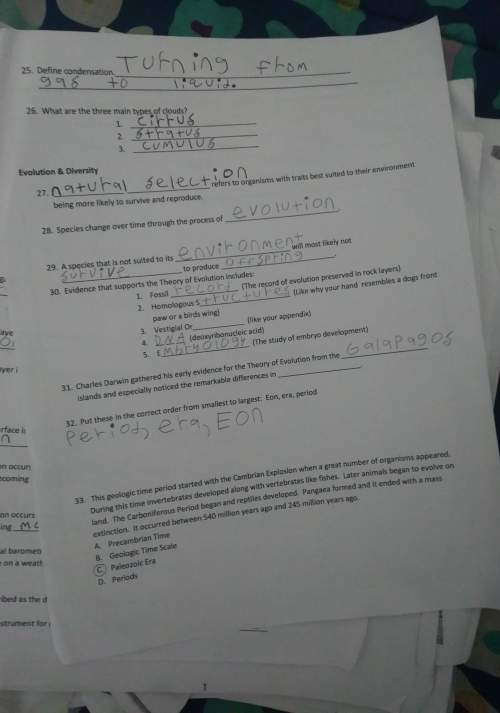The full range of frequencies of electromagnetic radiation is called
a. visible light
b....


Answers: 2


Another question on Physics

Physics, 21.06.2019 17:20
American eels (anguilla rostrata) are freshwater fish with long, slender bodies that we can treat as uniform cylinders 1.0 m long and 10 cm in diameter. an eel compensates for its small jaw and teeth by holding onto prey with its mouth and then rapidly spinning its body around its long axis to tear off a piece of flesh. eels have been recorded to spin at up to 14 revolutions per second when feeding in this way. although this feeding method is costly in terms of energy, it allows the eel to feed on larger prey than it otherwise could. 1.a field researcher uses the slow-motion feature on her phones camera to shoot a video of an eel spinning at its maximum rate. the camera records at 120 frames per second. through what angle does the eel rotate from one frame to the next? 2. the eel is observed to spin at 14 spins per second clockwise, and 10 seconds later it is observed to spin at 8 spins per second counterclockwise. what is the magnitude of the eels average angular acceleration during this time? 3. the eel has a certain amount of rotational kinetic energy when spinning at 14 spins per second. if it swam in a straight line instead, about how fast would the eel have to swim to have the same amount of kinetic energy as when it is spinning? 4.a new species of eel is found to have the same mass but one-quarter the length and twice the diameter of the american eel. how does its moment of inertia for spinning around its long axis compare to that of the american eel?
Answers: 1

Physics, 22.06.2019 00:20
2.22/3.33 points | previous answers tamucolphysmechl1 4.pre.002. ask your teacher my notes question part points submissions used on a frictionless air track, a blue glider with mass 0.200 kg is moving to the right with a speed of 8.00 m/s. it strikes a red glider that has mass 0.600 kg and that is initially at rest. after the collision, the blue glider is moving to the left with a speed of 2.40 m/s. (a) what are the magnitude and direction of the velocity of the red glider after the collision? magnitude 3.33 m/s correct: your answer is correct. direction correct: your answer is correct. (b) is this collision elastic?
Answers: 1

Physics, 22.06.2019 08:30
What object a collides with object b and bounces back its final momentum is?
Answers: 1

Physics, 23.06.2019 00:30
Two waves maximally constructively interfere at a point in space. among the options below, select the possible value of their phase difference at that point in space.a. zerob. πc. π/2d. not determinable by the information provided
Answers: 3
You know the right answer?
Questions

Mathematics, 25.03.2021 18:20


Mathematics, 25.03.2021 18:20

Mathematics, 25.03.2021 18:20

Mathematics, 25.03.2021 18:20





Computers and Technology, 25.03.2021 18:20

Mathematics, 25.03.2021 18:20



Mathematics, 25.03.2021 18:20




Chemistry, 25.03.2021 18:20

Mathematics, 25.03.2021 18:20





